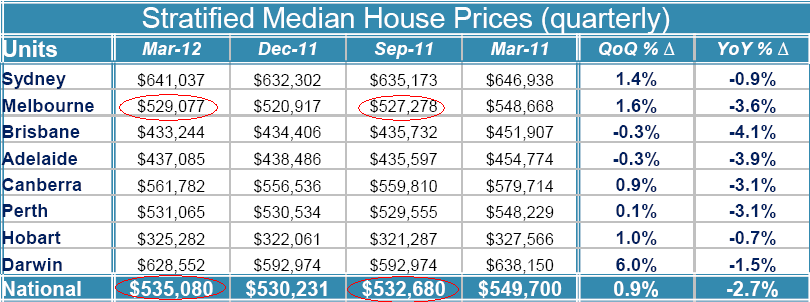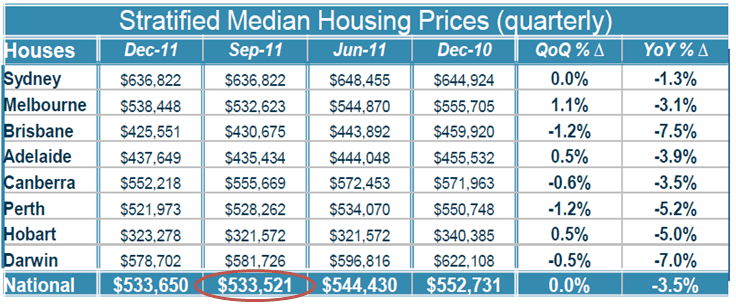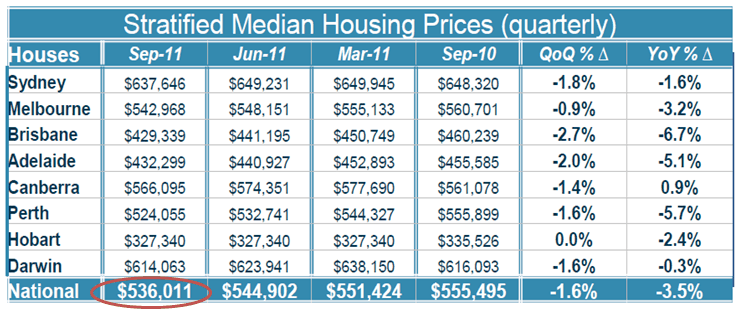APM has released its March quarter house price data. The release was titled “Australian housing market shows signs of recovery” and here are the headlines:
All capitals recorded increases in house prices over March with the exception of Adelaide and Brisbane.
Sydney’s resilience continues despite Australia’s highest medians with both house (+1.4%) and unit (+2.5%) prices rising
Melbourne recorded the best result for house price growth of the major capitals up +1.6% over the quarter
All good then!
Except there are a few devils lurking in the detail. The problem is, as they did last quarter, APM has failed to acknowledge its revisions to past data.
Here are the actual numbers for the March quarter :

And here is the same chart for the December quarter:

And the September quarter:

Note the national median figure in each, which was $536,011 in the original September release, and was then revised to December to $533,521 and again in this latest release to $532,680.
For two quarters in a row, APM has trumpeted this as rising house prices. But given the revisions, there is considerable doubt about the real strength of that conclusion. .
To be clear, my problem is not with the revisions. It is the failure to acknowledge them, which makes APM’s claims about market movements (up or down) highly contingent.
The case of Melbourne makes the point more clearly. In today’s March 2012 release, the Melbourne median is $529,077, reported as up 1.6% for the quarter from $520,917 in December, after an almost as impressive 1.1% gain reported in the December quarter release. But the December release reported the median for that quarter at $538,448. So in the new March report, APM has actually revised December Melbourne data down 3.26% to produce a magical 1.6% rise, which it has loudly proclaimed as a terrific gain without so much as a squib about the revision that produced it.
P.S. This is obviously a snap shot of the release. The Unconventional Economist will return this afternoon with a full breakdown of the actual data.
Update: I’ve edited this post because, having read UE’s post and a couple of the comments, I think I was being a bit unfair in not also using an example that showed a revision upwards. The main point remains, APM should be declaring revisions up front or they are not being transparent.

